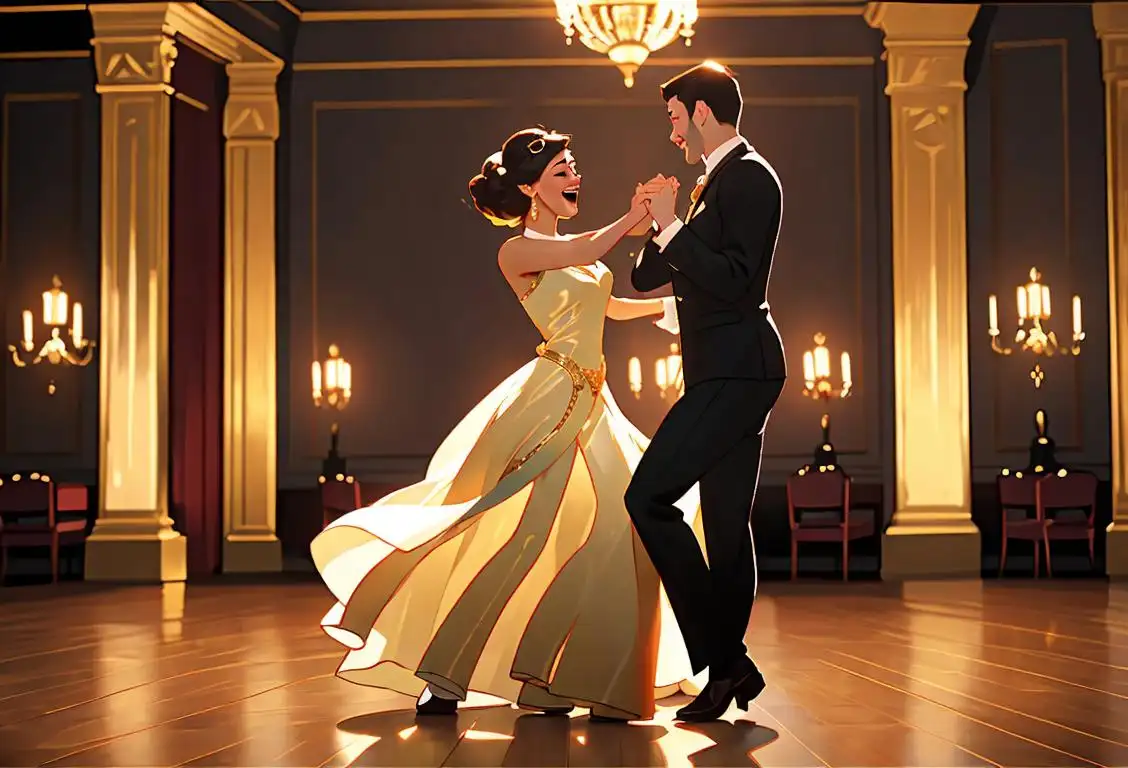National Dancing Day

Get ready to bust out your dancing shoes because it's National Dancing Day! This joyous celebration of rhythm and movement has taken the internet by storm with 199 mentions online, with its peak on 30 Jul 2016. So, put on your favorite tunes and let's dance our way through the fascinating history of this fabulous holiday!
When is Dancing Day?
It's national dancing day on the 30th July.
The Origins of National Dancing Day
While dancing has been a part of human culture since time immemorial, National Dancing Day found its roots in the internet age. Social media became the platform where dance enthusiasts united to promote the love of dance and share their own moves. The hashtag #NationalDancingDay quickly trended and gained widespread attention, leading to the establishment of an official day for celebrating the magic of dance.
For years, folks would mark this special day by uploading videos of themselves busting a move, showcasing their dance skills, or simply sharing their favorite dance routines online. It became a day to celebrate the power of dance to bring people together and ignite joy.
Why Dance Matters
Dance has always been more than just a series of rhythmic steps. It's a form of self-expression, a way to communicate without words. Whether you're dancing in front of a mirror, on a stage, or in the comfort of your own living room, it allows you to let go, be free, and connect with your inner self.
Moreover, dancing has numerous health benefits. It's not only a fun way to stay active but also a catalyst for boosting your mood and reducing stress. Plus, it can improve your flexibility, coordination, and balance. So, don't be shy, get up and shake those hips!
How to Celebrate National Dancing Day
There are plenty of ways to join in on the National Dancing Day festivities. Here are a few ideas to get you started:
- Gather your loved ones and have a dance party in your backyard or living room. Cue up an energizing playlist and let the good times roll!
- Take a dance class, whether in person or online. From ballet to salsa to hip-hop, there's a dance style for everyone. Expand your repertoire and learn some new moves.
- Support your local dance community by attending a dance performance or recital. Showcasing talent and spreading the joy of dance is what this day is all about.
Remember, National Dancing Day is not limited to just one day a year. Dance whenever you feel the rhythm in your soul and let the music lead your feet!
History behind the term 'Dancing'
BCE
Ancient Origins
Dancing can be traced back to ancient times, with evidence of primitive forms of dance found in cave paintings dating as far back as the prehistoric era. These early dances were likely performed as a way to communicate with spirits or to celebrate significant events in the lives of early humans.
17th Century BCE
Egyptian Elegance
In ancient Egypt, dance played a significant role in religious rituals and entertainment. The famous tomb paintings of Thebes depict dancers with graceful movements and elaborate costumes. Dance was considered an important form of expression, and professional dancers were deeply respected in Egyptian society.
5th Century BCE
Greek Influence
The ancient Greeks made significant contributions to the development of dance as an art form. They believed in the strong connection between dance and music, and dance became an integral part of their educational system. Greek dances were performed at religious festivals, in theatrical productions, and as a form of physical exercise.
15th Century
Renaissance Revelry
During the Renaissance period, dance underwent a revival in Europe. Dancing became a popular pastime among nobility and was an essential skill for courtiers. Elaborate court dances, such as the pavane and galliard, were performed at royal courts across Europe. Dance masters emerged, teaching the art of dance to the aristocracy.
19th Century
Ballet and Ballrooms
In the 19th century, ballet emerged as a highly technical and artistic dance form. Choreographers such as Marius Petipa revolutionized ballet with their intricate compositions. Meanwhile, social dances like the waltz and polka gained popularity in ballrooms, providing a more accessible form of dance for the general public.
20th Century
Jazz and Modern Dance
The 20th century saw the rise of jazz and modern dance, which challenged traditional forms and introduced new styles and movements. Jazz dance, with its syncopated rhythms and improvisation, gained popularity in the early 1900s, especially in African American communities. Modern dance pioneers like Isadora Duncan and Martha Graham pushed boundaries and embraced a more expressive and individualistic approach to dance.
Present
Diverse Dance Forms
Today, dance encompasses a vast array of styles and genres, ranging from classical ballet to hip-hop, contemporary, and cultural dances from around the world. It serves as a means of artistic expression, cultural preservation, entertainment, and physical fitness. Dance continues to evolve, reflecting the diversity and creativity of human expression.
Did you know?
Did you know that the longest dance marathon in history lasted a whopping 5,113 hours? It took place in Kilkenny, Ireland in 2011, where twenty-two couples waltzed their way into the record books. Talk about dedication!Tagged
fun loved onesFirst identified
18th July 2015Most mentioned on
30th July 2016Total mentions
199Other days
Medal Of Honor Day
Cheese Pizza Day
Foundation Day
Cancer Survivors Day
Suicide Prevention Day
Compliment Day
Memorial Day
Guac Day
Pumpkin Day
Bacon Day









